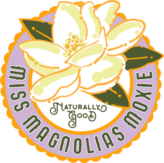Scientific Name: (Hedera Helix, Ginseng Family)
Common Name: True or English Ivy
Medicinal Part: Leaves and Berries
Description: A woody climber with evergreen, glossy, rounded heart shaped or kidney-shaped and three-lobed or three-angled, often variegated leaves or in some varieties more deeply 3-7 cleft, yellowish green flowers in the summer and blackish berries. Covers shaded walls adhering by its rootlets.
Properties and Uses: Leaves: Stimulant, vulnerary, exanthematous (skin rash accompanying a disease or fever) and insecticide. Berries: Emetic and cathartic.
Dose and Preparation: Strong decoction of two cups (I think this is a bit much) crushed dried leaves in liter and a half water. Studies have also shown that an extract from the leaves can help children with asthma and adults with chronic obstructive pulmonary diseases (25 drops per day and 50 for adults). A wash made from the leaf has been used to treat yeast infections such as candida, and a cream for external use is made from ivy leaves, horsetail and Lady’s Mantle to reduce, but not eliminate stretch marks. Ivy is poisonous if taken in large doses, and should not be used for children or pregnant or lactating women.

